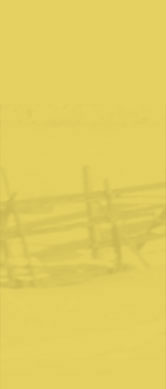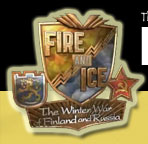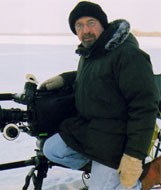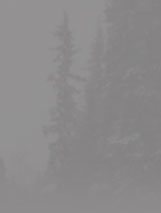

Low tech Meets High Tech
Word / PDF
ESSAY
Soviet Union- Economic Development
By 1927 Joseph Stalin had gained complete control of the Communist
Party. He used his power to institute policies to radically transform
the Soviet Union economically. These policies were implemented through
a system of central planning with five-year targets for rapid industrialization
and the collectivization of agriculture. At the same time, there
were huge allocations for the Red Army.
The First Five Year Plan, from 1928 to 1932, concentrated on heavy
industries such as mining, machinery, electrical power generation
and railroad construction. Many new factories were built to produce
goods such as automobiles, tractors and steel. During this period
industrial production more than doubled.
The development of heavy industry and manufacturing also allowed
for the production of vast numbers of tanks, aircraft, artillery
and other modern weapons. Military leaders developed a doctrine of
mobile mechanized warfare to utilize these new resources.
The Second Five Year Plan, from 1933 to 1937, was first intended
to pay more attention to consumer goods, but with the growing threat
of war, there was an increased emphasis on heavy industry. The production
of armaments and weaponry increased as well.
By the end of 1930s, the Five Year Plans turned the Soviet Union
into a major industrial power, behind only the United States and
Germany. The Soviet Red Army was now the largest and most technologically
advanced army in the world.
The Soviet Union’s drive to modernization, however, came with a heavy cost in the lives of millions who died during widespread famines, were executed or deported for resisting government policy, and millions more who were imprisoned or otherwise conscripted into forced labor.
Finland- Economic Development
Historically, Finland’s economy was based on its abundance
of lumber and its agriculture. But the nation’s economy had
been damaged by interruptions in trade following the Russian Revolution,
World War I and Finland’s civil war, which followed the birth
of the Finnish republic in 1917.
During the early years of independence, Finland was dependent on aid from the U.S. to feed its people, but growing trade with Europe began to improve the nation’s economy. Lumber, pulp and paper accounted for about 85 percent of Finland’s exports, which brought in enough currency to import half the nation's food supply and most of its manufactured goods. In contrast to the Soviet Union, Finland instituted an agricultural reform policy that redistributed agricultural and forest land among a larger percentage of the population, which now had a direct self-interest in improving productivity.
The government did nationalize a large portion of its mining and wood-processing industries and invested public funds to modernize mines, foundries, wood and paper mills and shipyards to process and ship the raw materials.
The Great Depression of the 1930s led to widespread hardship in Finland. Farmers shifted from producing for export to producing for internal consumption, which prevented famine and alleviated hunger but did not generate funds needed for additional investments in industry, manufacturing or in modernizing Finland’s armed forces. As a result, when the Winter War began, Finland’s comparatively small army had virtually no modern weapons.
Winter War Strategy
At the outbreak of the Winter War, the immediate challenge for Finland’s armed forces was how to counter the Soviet Union, an opponent far superior in size and military technology all along its 1,300-kilometer border.
The Finns had anticipated a Soviet attack from the south, through the Karelian Isthmus. Finnish commanders mobilized the armed forces in September and October and began preparing their defensive line, called the Mannerheim Line, three to four months in advance of the outbreak of war. If not for this early mobilization, Soviet troops would have likely easily broken through.
In the north, geography greatly helped the Finns. Although Finnish commanders were surprised by the Soviet attack through this mostly wilderness area, the few passable roads made the terrain unsuitable for mechanized warfare.
The weather also favored the Finns. The winter of 1939 was one of the coldest in history, making it difficult for machinery to operate. Finns knew the terrain and were prepared for the weather conditions. They dressed in white camouflage, making themselves virtually invisible to Soviet troops.
The terrain and the weather favored highly mobile, small unit tactics developed by the Finns. By striking the front and rear of the long, single files of the Soviet mechanized columns, they were able to stop Soviet progress. The Finns trapped the Soviets, and then with hit and run raids on skis, chopped the single file of troops into smaller and smaller pieces. These so-called motti (the Finnish word for a cord of firewood) tactics, in the forests of northern Finland, in sub-zero weather, neutralized the Soviets’ numeric and technological strengths.
Another strategic advantage for the Finns came from their unity of purpose and their high morale. Finns knew that the war was a fight for their national survival. All segments of Finnish society banded together against a common enemy. Thus, they endured constant air raids, unceasing artillery barrages, the winter cold and the numerous casualties of the war.
In the end, however, the Soviet Union’s vast army and virtually infinite resources beat down Finland's spirited resistance. Yet, the Finnish Army was able to punish the Red Army sufficiently and hold out long enough so that Soviet Party leaders saw the wisdom of a negotiated settlement.
LESSON PLAN
Grade level 7-12
Time allotment 4-5 55 minute class periods
STANDARDS
World History Standards for Grades 5-12/ Era 8
National Center for History in the Schools
http://www.sscnet.ucla.edu/nchs/standards/worldera8.html
Standard 4B
The student understands the global scope, outcome and human costs
of the war and is therefore able to:
Compare World Wars I and II in terms of the impact of industrial
production, political goals, national mobilization, technological
innovations and scientific research on strategies, tactics and levels
of destruction.
OVERVIEW
In this lesson, students will explore the importance of industrial production and the application of technology in the strategies, destruction and tactics of the Winter War by creating a supply list of weaponry and items needed for survival by both the Soviets and the Finns.
OBJECTIVES
At the end of this lesson, students will be able to:
Compare and contrast Finland’s and the Soviet Union’s
industry and economy
Evaluate the advantages and disadvantages of the use of technology
in the Winter War as well as future wars
VOCABULARY
Five Year Plans
armaments
Karelian Isthmus
Mannerheim Line
motti
MATERIALS NEEDED
“Fire and Ice” DVD
Classroom board
Paper and pencil
PowerPoint or poster board and markers
Internet access
Overhead projector
INTRODUCTORY ACTIVITY
Divide students into pairs. Ask each pair to choose from the comparison topics below. Each pair of students will research and present an oral synopsis of the topic along with a comparison chart of each side using poster board or PowerPoint. Use all available classroom resources, the “Fire and Ice” DVD (review segments about Lotta Svärd, weather and Soviet weaponry [19:14-22:28 AND 29:41-39:05]) as well as the Web site links included in the Resources section of this guide.
The role of women in war- Compare the role of the Lotta Svärd in Finland to the role that American women played during World War II. Conclude with a discussion about the involvement of women in war today.
Weather and war – Compare the harsh winter weather of the Winter War and its effect on the Soviets to Desert Storm or the current war in Iraq and the effect of the desert weather on the Americans. What advantages do these weather conditions have on the natives? Conclude with a discussion about the use of meteorology as a current war strategy.
Use of transport in the Winter War – Compare the Finns’ use of horses to the tanks used by the Soviets. What were the advantages and disadvantages of each? Conclude with a discussion about the means of transport for fighting in Iraq and Afghanistan today.
ACTIVITY
Divide students into small groups. Each group is to assume the role of a supply officer for either the Finnish soldiers or the Red Army. Ask them to make a list of the supplies that will be needed to survive in the Winter War battle. Once each group completes their list for either side, compile a master list from each group and put on the overhead projector. Write the following considerations on the board as students prepare their supply lists:
What does a human being or animal need in order to survive in cold temperatures?
Will any non-essential items be carried?
What types of weapons will be transported?
What special considerations might there be to prepare the land for battle?
How will soldiers communicate with each other?
What types of supplies will be needed to maintain their means of transport?
How will these supplies be transported? Are there vehicles, horses, or will the soldiers carry them?
Since the Soviets were not prepared for a long war, how might their list look different than the Finns’ list?
DISCUSSION QUESTIONS:
How did the Finns and the Soviets use the profits that they gained from the goods they produced?
What effect did each country’s agricultural policies have on their nation as a whole?
How has the geography and terrain of other countries benefited them as the defenders of their territory?





